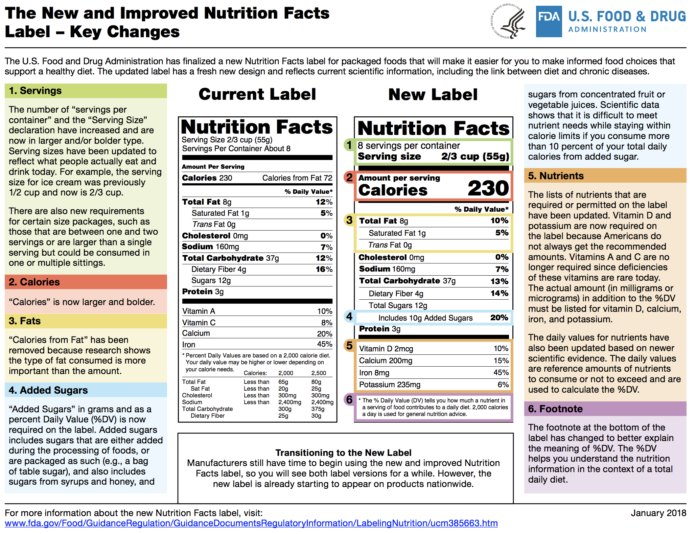
The new year marks the start of the new FDA labelling requirements for food companies with more than $10 million in sales. In late December, the FDA released a final guidance document to help packaged foods manufacturers comply with the new regulations. The final guidance updates a draft guidance issued in November 2018.
The final guidance answers food industry questions related to the following topics:
- The definition of a single-serving container
- Reference amounts customarily consumed (RACCs), which companies must use to determine serving sizes
- Dual-column labeling, including formatting for packaging with limited space
- Miscellaneous issues, such as requirements related to labels for chewing gum and multi-unit retail food packages
Changes from the draft guidance include:
- Added background information concerning RACCs for non-juice beverages for infants and young children
- Clarified requirements about listing nutrients contained in insignificant amounts on the Nutrition Facts label of products sold in small packages
- Clarified that the Nutrition Facts label should not be on the bottom of packages, unless the label can be seen during normal retail display and consumer handling
Highlights of serving-size guidance provided in the new document include:
- To determine serving sizes, food companies must use RACCs from 21 CFR 101.12(b) and the procedures described in 21 CFR 101.9(b).
- A serving size must be a common household measure or unit, such as tablespoon, teaspoon, cup, ounce, fluid ounce, piece, slice, fraction (for example, 1/4 pizza), jar, or tray.
- A single-serving container is one that contains less than 200% of the applicable RACC for that product. The entire content of a single-serving container must be labeled as one serving.
The guidance also clarified dual-column labeling requirements. Dual-labelling is mandatory for products packaged and sold individually that contain at least 200% and up to and including 300% of the applicable RACC. The first column lists nutrition information based on the serving size (derived from the RACC). The second column lists the nutrition information based on the entire contents of the package. Some exceptions apply for products in packages with limited space, items such as raw fruits, vegetables, seafood, and a few other products.
The dual-column labeling requirements also apply to products in discrete units (such as muffins, slices of bread, or individually packaged products in a multiserving package). Plus, manufacturers can voluntarily provide an additional column of nutrition information for each unit in single-serving containers that contain more than one discrete unit. Packages that contain between 150% and 200% of the RACC are also allowed to have a dual label.
The FDA press release announcing the final guidance noted that for the first six months of 2020, the agency will not focus on enforcing the label requirements but plans to work cooperatively to help manufacturers meet the new requirements.








